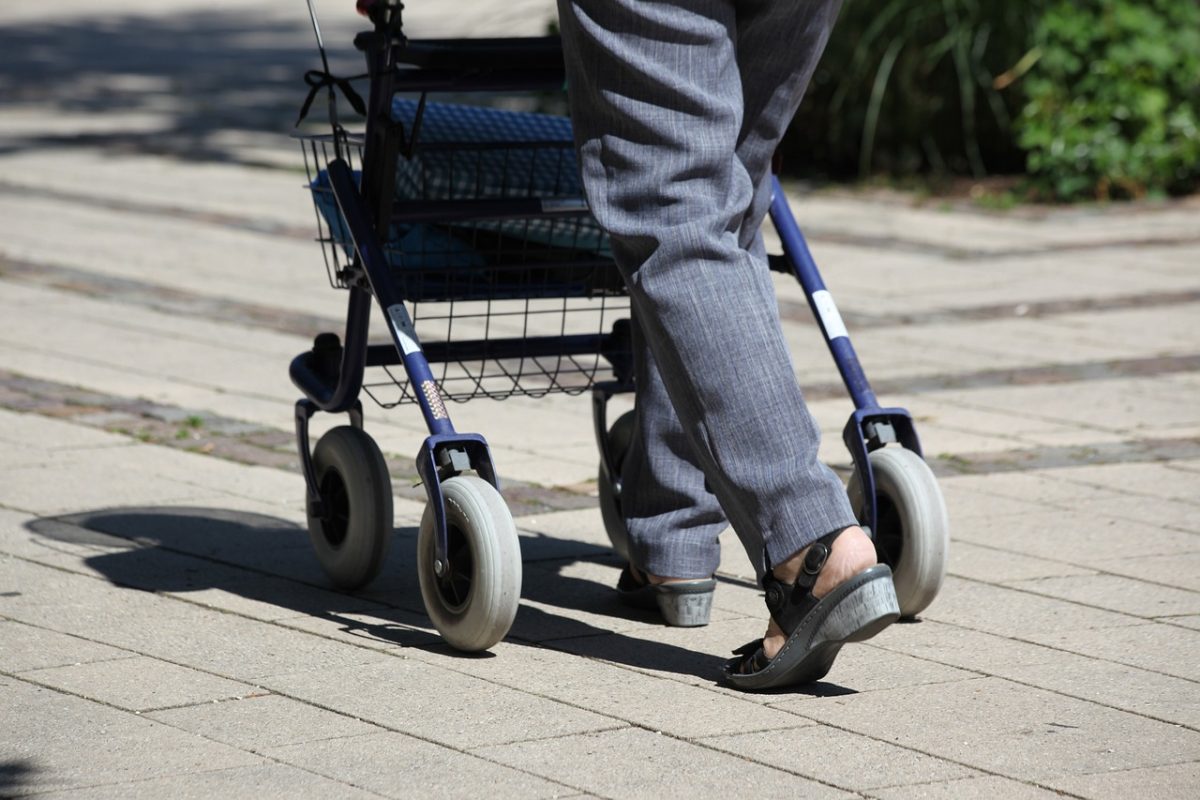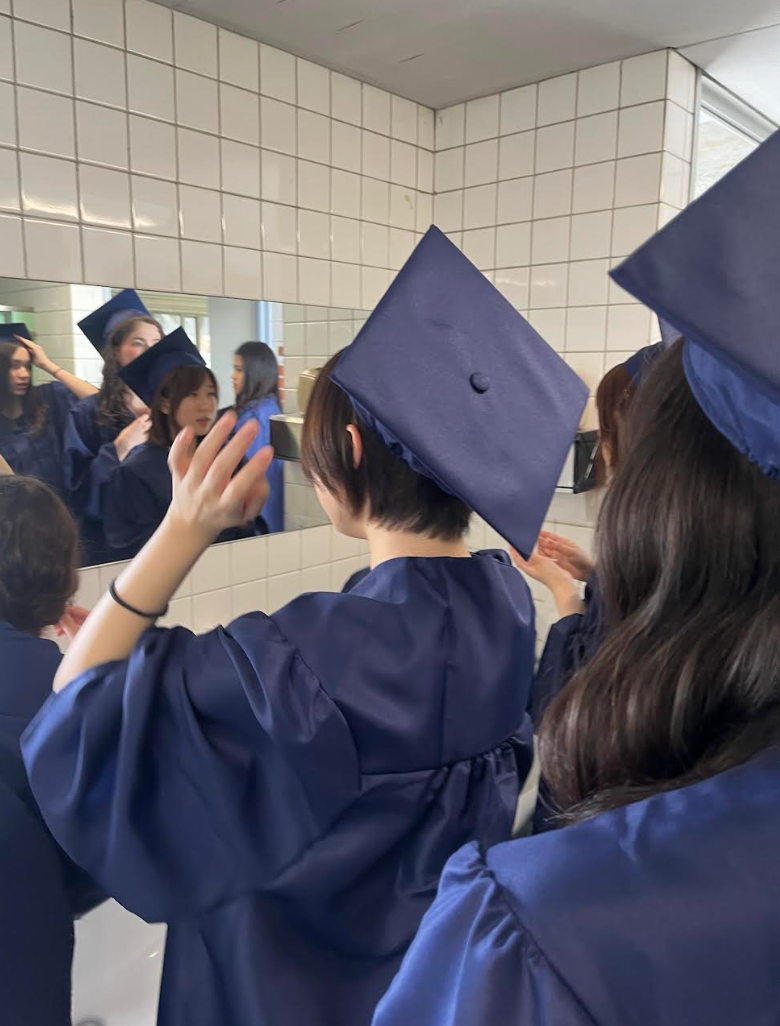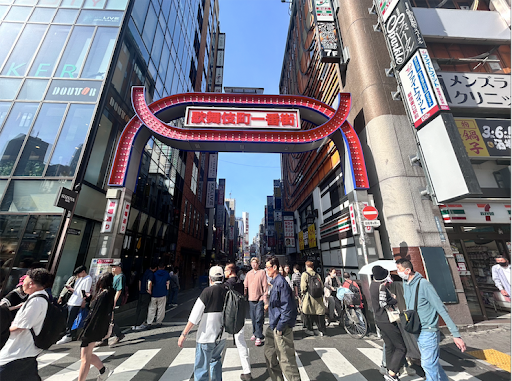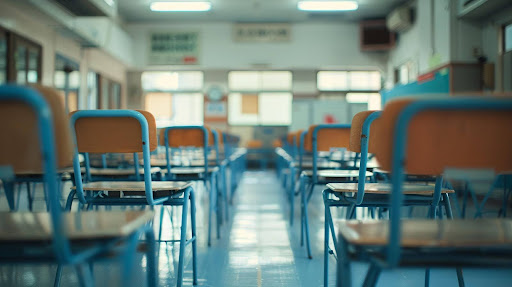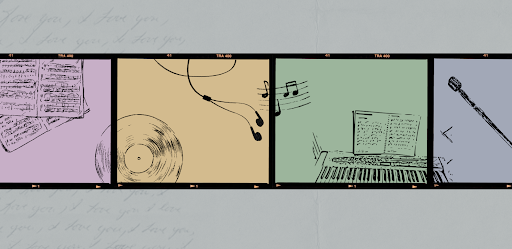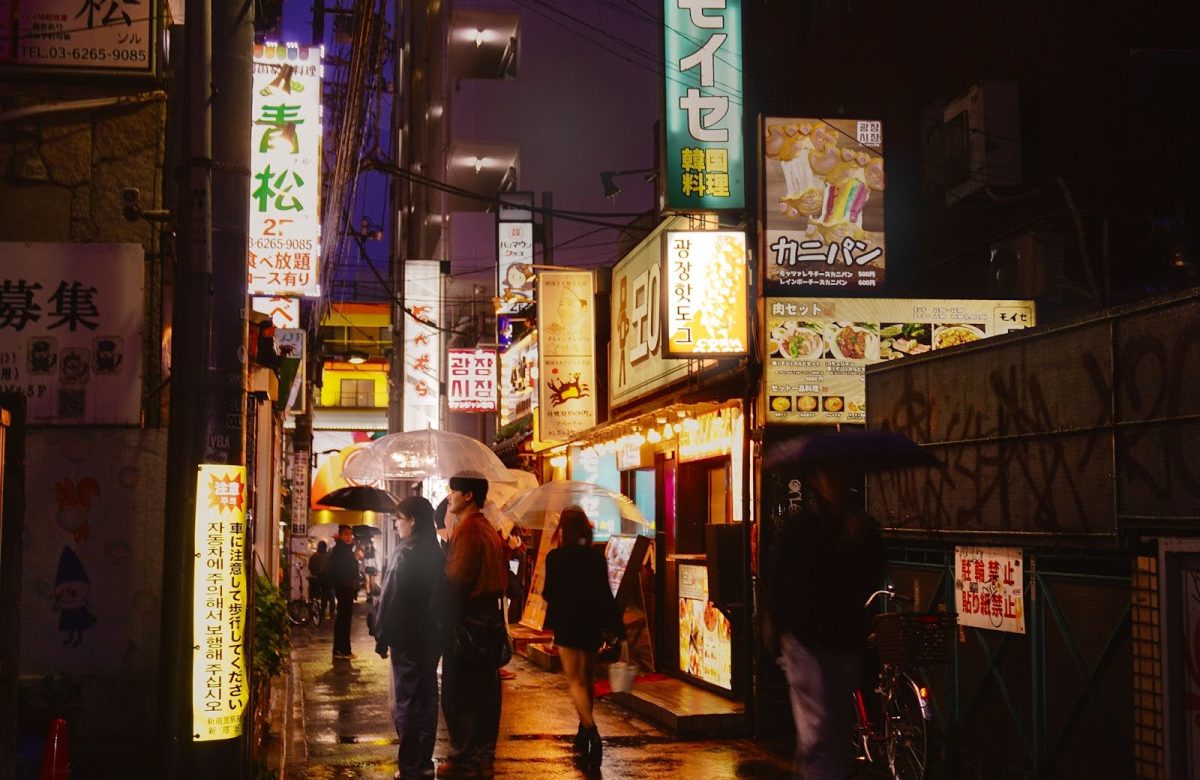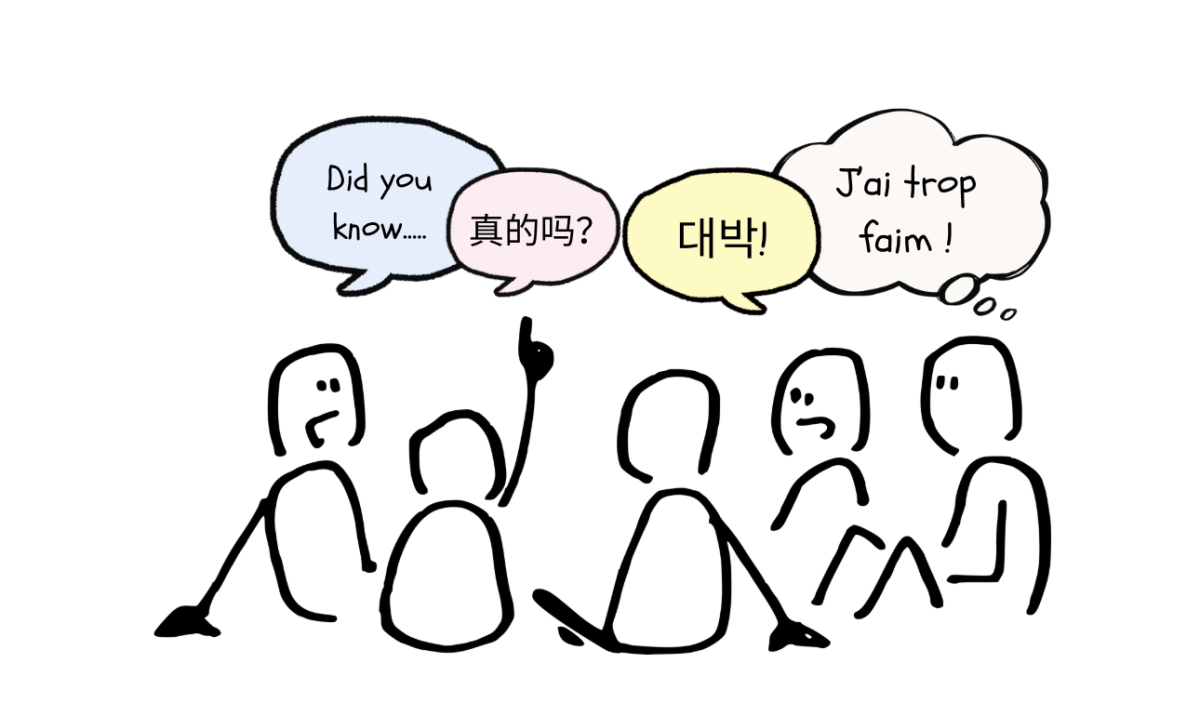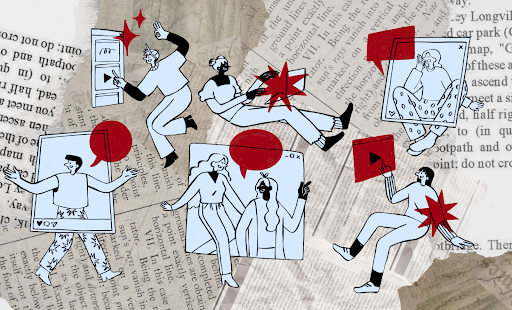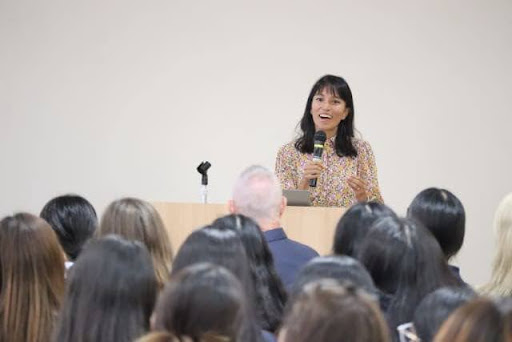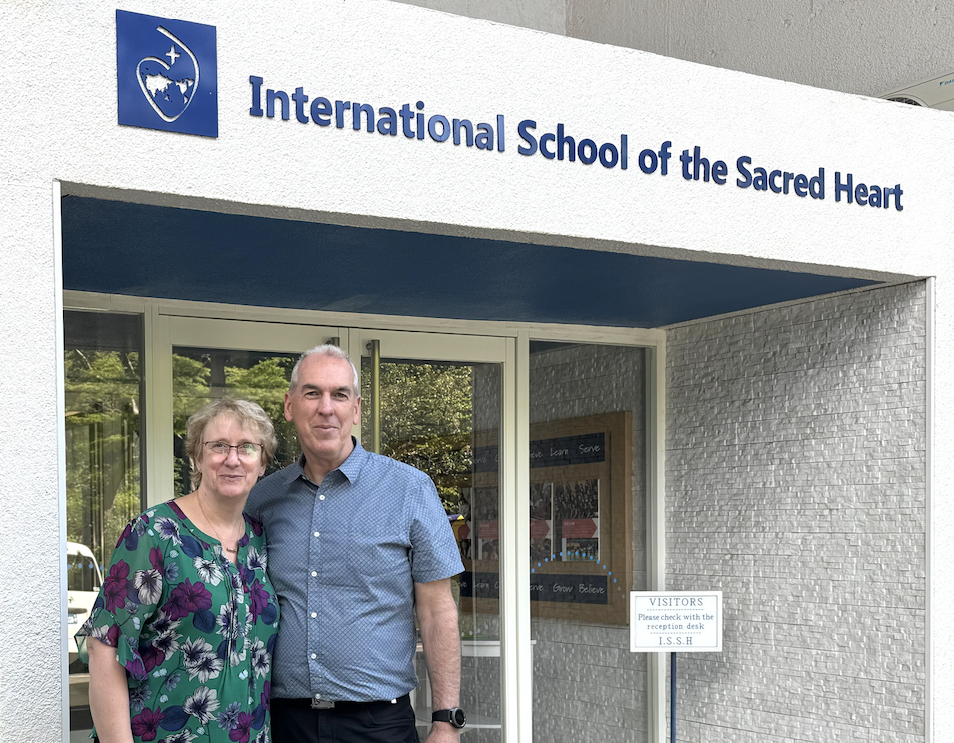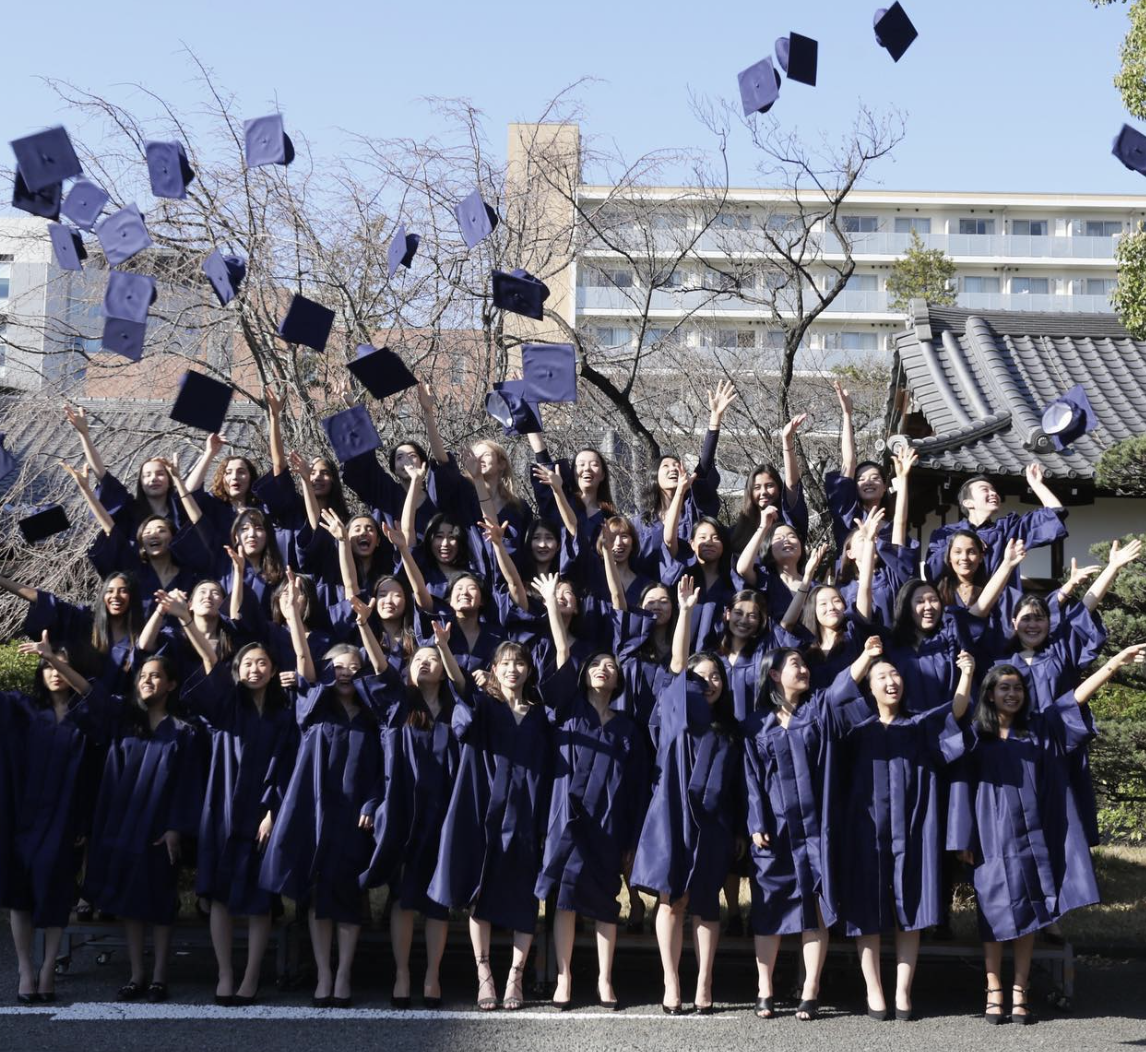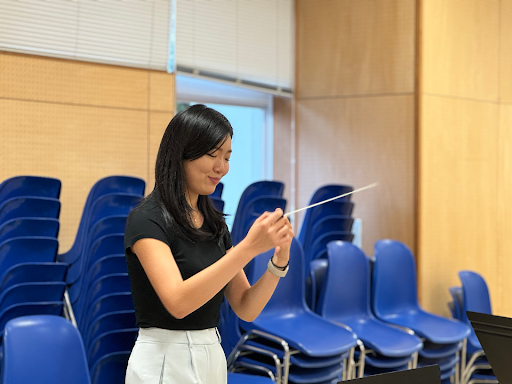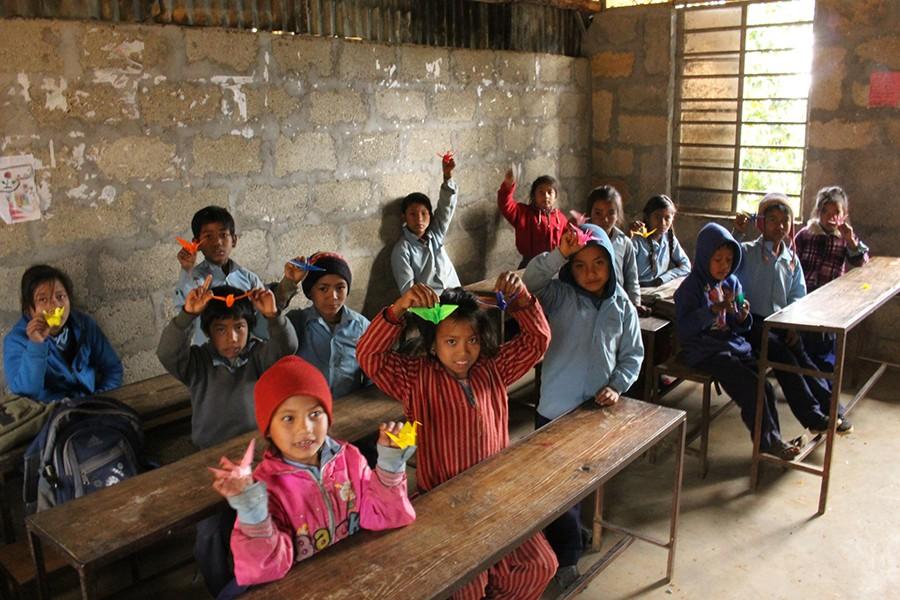ISSH SEEDS disperse from Tokyo to Nepal
Students leave 2014 with solar lanterns and enter 2015 with an enlightened view of Nepali development
Kids from Shree Manakamana Primary School hold up paper cranes that ISSH students taught them to make.
Arriving to marigold necklaces, an ISSH banner hanging in front of a pickup van, and a smiling KP Kafle, director of Nepal SEEDS, Sacred Heart commenced its third trip to Nepal. The ISSH SEEDS group spent 11 days this winter exploring Nepal’s cultures and lifestyles.
The group of 8 students and 2 teachers hopped into a van with luggage strapped to its roof, and made their way through armies of motorcycles and endless blasts of car horns to a hotel in Kathmandu City where they stayed the first two nights of the trip and later returned to the city for the last two nights after the trek. During the first two days, they toured Kathmandu, jouncing up and down in a van, gripping onto the seat of a bicycle rickshaw, or cautiously walking single file through the traffic congested streets.
The group’s city itinerary included visiting a child labour-free Tibetan carpet factory where refugees, who escaped from the Chinese invasion of Tibet, hand-weave and sell Tibetan wool carpets. Another destination was the Boudhanath Stupa, a Buddhist sanctuary where good karma is accumulated by travelling clockwise around the white dome and spinning its wooden wheels embedded into the walls. Along with spiritually preparing themselves for the trek ahead, the group took a minute in a sacred candle lit room of the stupa to commemorate the AirAsia plane that had gone missing on December 27. Last to be visited was the Patan Durbar Square, The Ancient Royal Palace and residence of a long generation of kings from the 13th to 18th centuries. Also, the palace’s acceptance of both the Buddhist and Hindu religions make the square a popular destination for travellers from across South Asia.
In Kathmandu, the students were able to experience a culture in which lifestyle dramatically contrasts to that of Tokyo’s. Simple daily acts such as wetting a toothbrush with water from the tap were strongly discouraged to avoid waterborne disease such as typhoid, cholera, and dysentery.
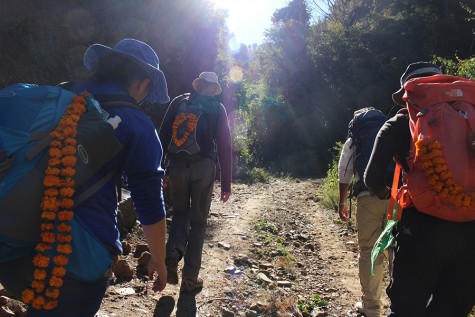
The group hikes up a trail to their campsite with marigold embellished hiking packs and sun hats.
The rural side of Nepal was a whole scene change.
Tranquility and a panoramic view of endless hills of terraced farming in the Himalayan mountain ranges replaced blares of car horns, tightly packed stores, and smoky air.
On the trek, two Nepali girls, Shimron and Ambika, with personal ties to Nepal SEEDS joined the group. Their fluent English and Nepali allowed for them to act as translators and even teach some Nepali to the group.
Each day consisted of a three to four hour trek and various visits to local farms and village houses. Often the trails lacked footpaths, and those that did not were centuries old and used by generations of local inhabitants to travel between villages. After the hikes, porters and chefs were able to provide a large variety of food despite the lack of resources around campsites. The group’s food was carried by the porters who also carried the group’s luggage and tents to the campsites over sweeping hills.
At local residences, ISSH students were able to observe the benefits biogas presented, as roofs of houses that burned wood were covered with black soot. This made evident the reason for the prevalence of acute lower respiratory infections and pneumonia in Nepal, as wives and children live in conditions of little ventilation for the accumulated smoke.
Along the trek, the group visited the Shree Manakamana primary school, and Bandevi primary school to deliver 192 Luci Lights. Luci Lights are waterproof, solar paneled lights that resemble lanterns. Mr. Felstehausen notes the importance of the Luci lights, “Luci Lights support education for girls and boys at Shree Manakamana and Bandevi Primary Schools with the hope that education brings enlightenment, employment, entertainment, insight, and future prospects.” The ISSH students not only got to see the condition of the school in terms of architecture and infrastructure, but also learned how students were educated in Nepal.
When asked what she took most from the trip, Karen (11) reflected, “We passed by some people carrying water up the hill, and I couldn’t imagine how hard it must be to do that daily.” Julia (12) said, “I think I changed a bit. I could see a new section of the world in front of me. Reading about it is not the same, and I could see and feel new things.”

